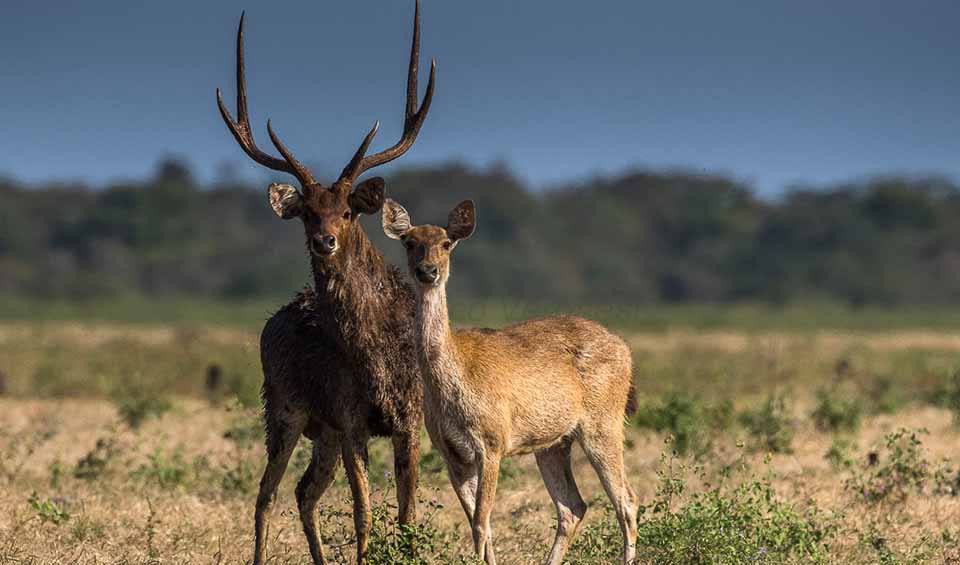Rusa – Sambar
Their distinctive vocalizations and sacred status in some cultures make them a truly unique and captivating species
An iconic species spread across various parts of Asia, including Indonesia, Malaysia, and the Philippines. With a broad distribution, this species showcases an impressive adaptability to diverse habitats ranging from dense tropical forests to open grasslands and even mountainous terrains. This adaptability has allowed the Sambar to thrive in various environmental conditions. However, it has also led to its introduction in places like Australia and New Caledonia, where it has established feral populations.
Sambar deer are among the larger members of the deer family. They are characterized by a robust build, a dark brown coat that provides camouflage in their natural habitat, and a lighter, often white, underbelly. One of the most striking features of the Sambar deer is its impressive antler size. Males boast long, curved antlers extending up to a meter in length, symbolizing strength and masculinity. These antlers are shed and regrown annually, driven by hormonal changes and environmental factors.
The distinctive hump on the back of the Sambar deer is another unique physical attribute, contributing to their distinctive silhouette and providing muscle attachment points that enhance their ability to navigate rugged terrain.
Sambar deer exhibit a variety of behaviors that reflect their complex social structure. They are generally solitary or live in small groups, especially outside the breeding season, known as the rut. During the rut, males become more territorial and vocal, using a variety of sounds to communicate with females and challenge rivals. Their vocalizations, ranging from deep, resonant calls to sharp alarm barks, play a crucial role in their social interactions and mating rituals.
Their diet is predominantly herbivorous, consisting mainly of a wide variety of vegetation, including leaves, shoots, and fruit. This diet is closely linked to their habitat, with those in forested areas having access to a different range of food sources than those in grasslands or scrub areas.
Species in this genus
Javan deer
Featured in Indonesian national parks and conservation symbols, making them a wildlife ambassador for the country
Philippine deer
Their dark brown fur helps them blend perfectly with the forest, making them hard to spot in the wild
Sambar deer
With its towering stature and impressive antlers, is a true king of the Asian forests




